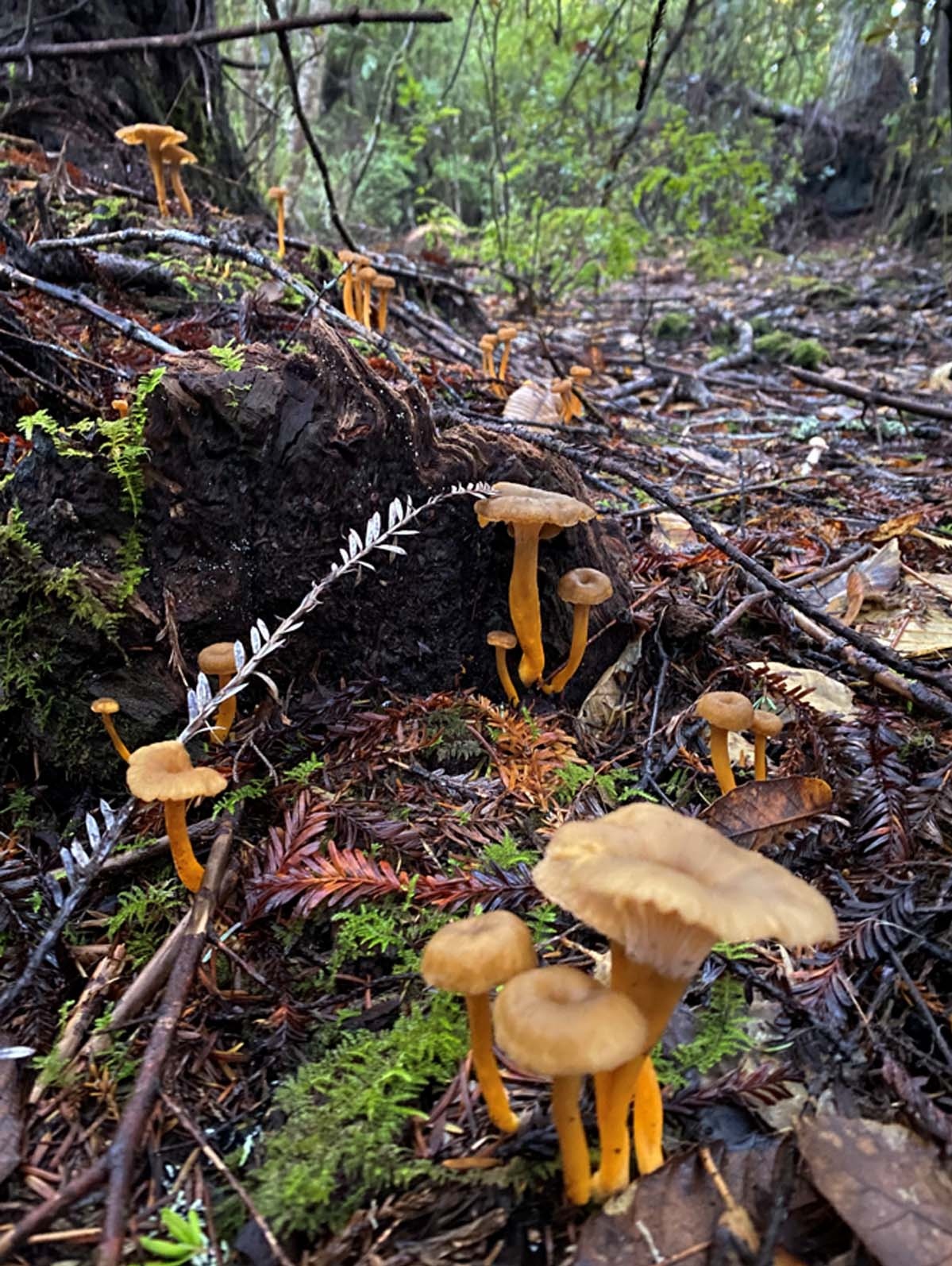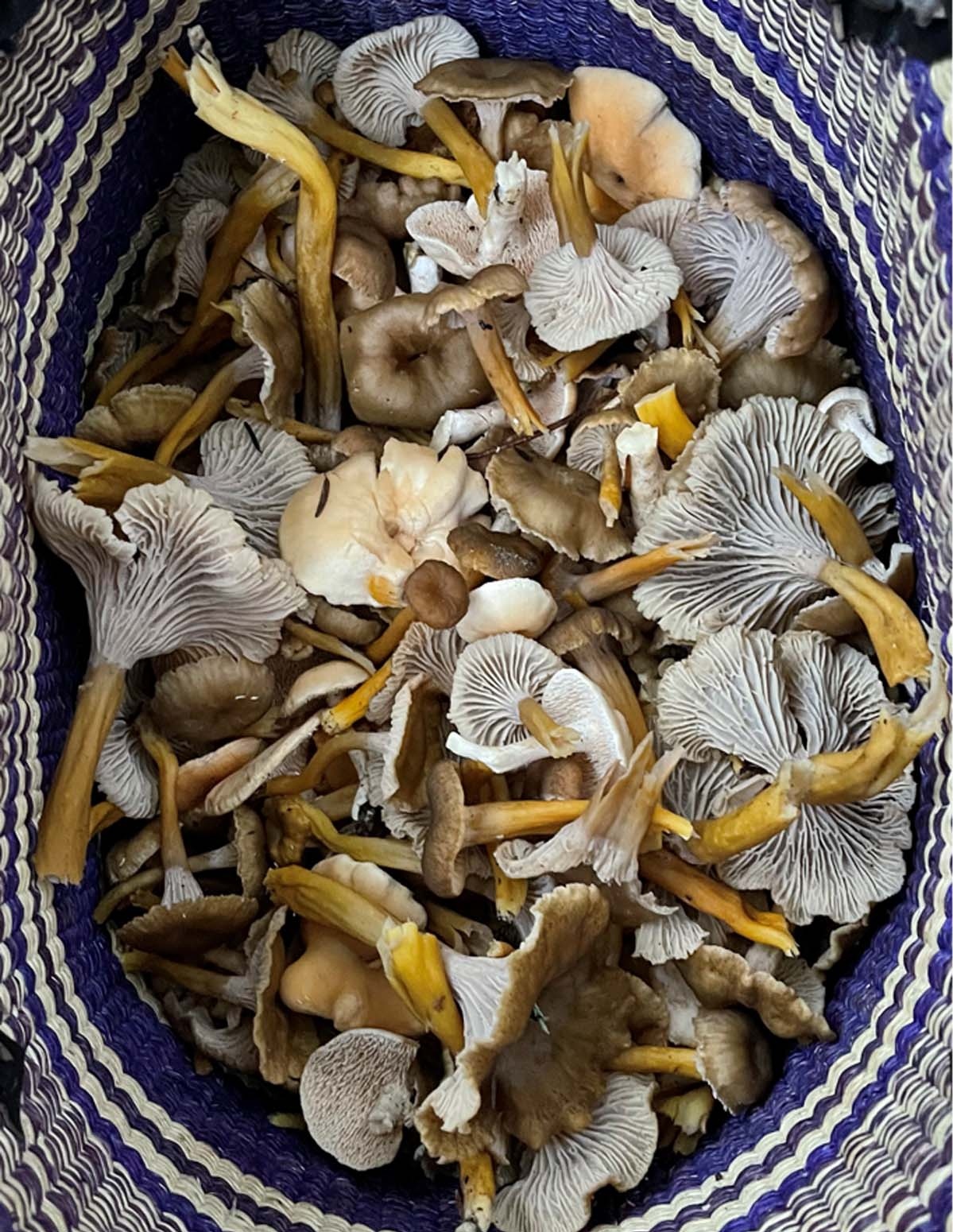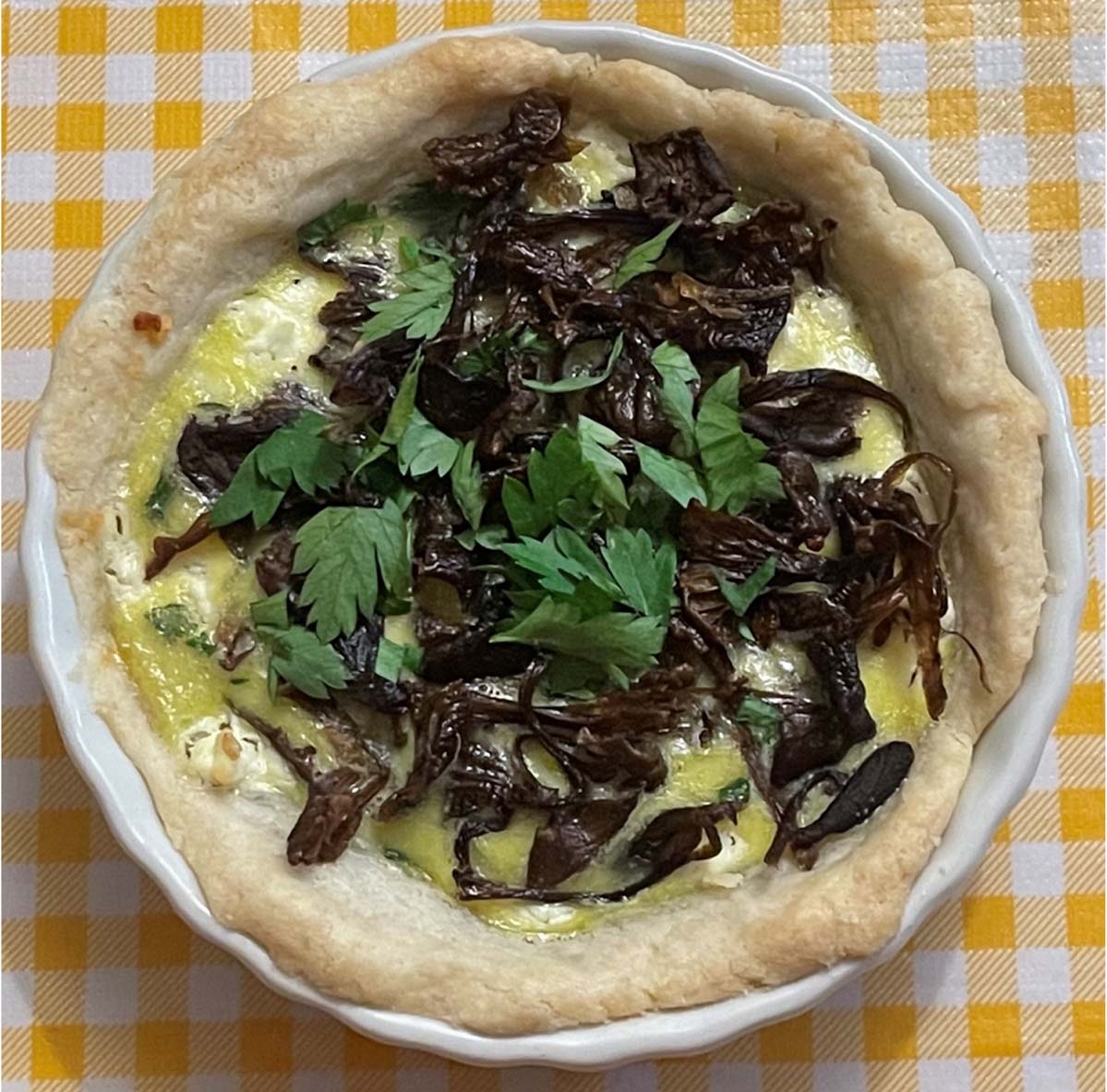|
| |
Culinary CornerHanna Docampo Pham Distinguished from many other states in America, California is home to an abundance of yellowfoot. On good years, you will find them carpeting the forest floor. Other times, a lack of moisture can leave you scouring their environments: moss, rotten wood, near conifers like pines, spruces, and firs, only to find a few mushrooms or none. Distinguished from many other states in America, California is home to an abundance of yellowfoot. On good years, you will find them carpeting the forest floor. Other times, a lack of moisture can leave you scouring their environments: moss, rotten wood, near conifers like pines, spruces, and firs, only to find a few mushrooms or none.Craterellus tubaeformis are known as funnel chanterelles, winter chanterelles, and most commonly yellowfoot. Yellowfoot start growing with slender stalks and small caps, but mature into larger flowery mushrooms. They have bright saffron and light brown tones, and often are petite when harvested.  Yellowfoot are not as prized as porcini, black trumpets, and other mushrooms, and while you might not know how to cook them, don’t be mistaken. In appearance, yellowfoot have thin flesh and a faint sweet and fruity aroma. Once cooked, they exhibit an earthy umami flavor, a quality that has yellowfoot present in stocks, broths, stews, and soups. Unlike golden chanterelles, categorized in the same mushroom group as yellowfoot, yellowfoot can be dried while retaining flavor and texture. Yellowfoot can complement a versatile range of dishes, like pizza, meat, and pasta, without overwhelming other flavors. Additionally, yellowfoot contains many vitamins, including high potassium, vitamin D, and vitamin B content. Yellowfoot are not as prized as porcini, black trumpets, and other mushrooms, and while you might not know how to cook them, don’t be mistaken. In appearance, yellowfoot have thin flesh and a faint sweet and fruity aroma. Once cooked, they exhibit an earthy umami flavor, a quality that has yellowfoot present in stocks, broths, stews, and soups. Unlike golden chanterelles, categorized in the same mushroom group as yellowfoot, yellowfoot can be dried while retaining flavor and texture. Yellowfoot can complement a versatile range of dishes, like pizza, meat, and pasta, without overwhelming other flavors. Additionally, yellowfoot contains many vitamins, including high potassium, vitamin D, and vitamin B content.The recipe for this month was originally from Hugh Acheson. Paired with a fresh salad, the yellowfoot tarts make a delicious meal!  Yellowfoot & Goat Cheese Tarts
Adapted by Hanna Docampo Pham For the dough*:
1 cup and 2 tablespoons flour ¼ teaspoon salt ¼ pound (1 stick) cold unsalted butter, cut into ¼ inch cubes 3 tablespoons ice water *Requires dough to be chilled for 2 hours For the filling: 2 tablespoons unsalted butter 1 shallot, minced 2 cups Yellowfoot (Craterellus tubaeformis), cleaned and quartered 1 sprig fresh thyme salt flour (for dusting) ¼ pound fresh goat cheese 3 eggs 1 tablespoon heavy cream ¹⁄8 teaspoon grated nutmeg 1 tablespoon chopped fresh flat-leaf parsley leaves 1 tablespoon pine nuts, toasted and finely chopped In a food processor, combine the flour and salt. Pulse a couple of times to blend. Add the butter and ice water, and blend for 10-12 seconds. The result should look like clumpy sand. Pour the contents of the food processor into a medium mixing bowl and form it into a ball. Add a little water if you need to, but it should feel just moist enough to hold its shape. Wrap the dough tightly in plastic wrap and let it rest in the fridge for 2 hours. Preheat the oven to 400°F. In a large saute pan, melt the butter over medium-high heat. When the butter bubbles and froths, add the shallot and cook for 2 minutes. Reduce the heat to medium, add the Yellowfoot and thyme sprig, and cook for 10 minutes, until the mushrooms are golden brown, glistening from the butter, and wilting a bit. Season the mushrooms with salt to taste. Pour the mushrooms onto a plate and let them cool while you build your tarts. Remove the dough from the fridge and place it on a smooth floured surface. Roll it out with a rolling pin, pressing firmly in the center and rolling outwards, until you have a ¹⁄8- to ¼-inch-thick round about 13 inches in diameter. With a cookie cutter or knife, cut four 5-inch diameter circles out of the dough and poke each one with a fork in many places to create tiny holes, so it won’t puff up too much during baking. Place the dough into four 4-inch tart pans, and press the bottoms and sides, creating your tart shells. Crumble the goat cheese and divide into the tart shells. Discard thyme sprig from mushrooms and evenly disperse on top. In a small bowl, add eggs, cream, nutmeg, ¼ teaspoon salt, parsley, and pine nuts. Whisk well to combine. Pour the egg mixture evenly over the mushrooms. Place tart pans on a sheet pan. Bake them for 15 minutes, or until the egg has set and the crust is cooked through. Let cool for several minutes before removing the tart pans. Serve warm or at room temperature. Culinary Group News
Currently, the Culinary Group’s regular dining program goes on hiatus due to a high number of COVID-19 cases. No events for the Culinary Group were in attendance in January.
The MSSF Culinary Group is open to all MSSF members who are interested in the gastronomical aspects of mushrooming as a participatory cooking group. Due to the current public health situation, the Culinary Group is not currently meeting in person; instead we are meeting on zoom. Gatherings are generally held on the first Monday of each month at 7 p.m. at the San Francisco County Fair Building (Hall of Flowers). Members of MSSF and the Culinary Group, and their guests, are invited to attend. | |
| Mycena News - February |